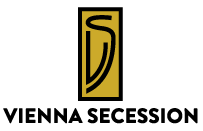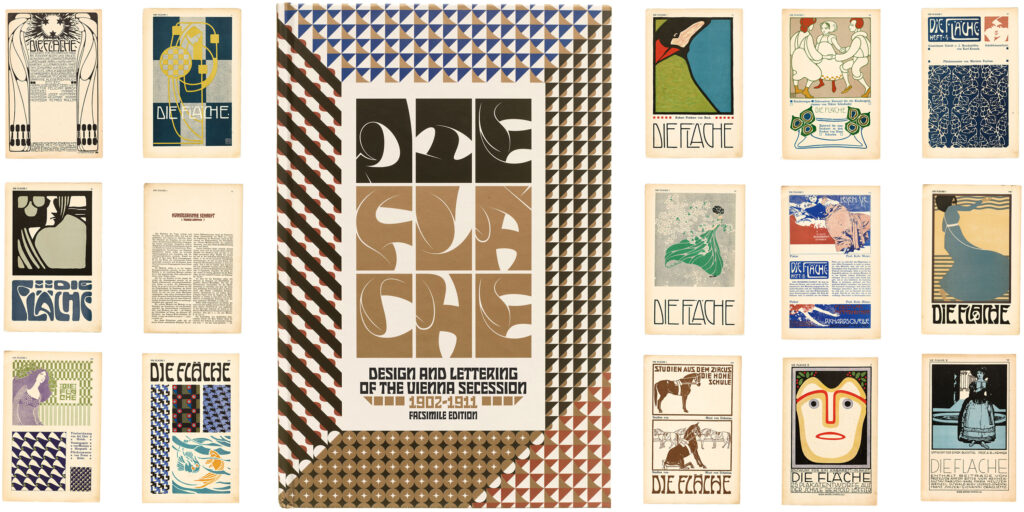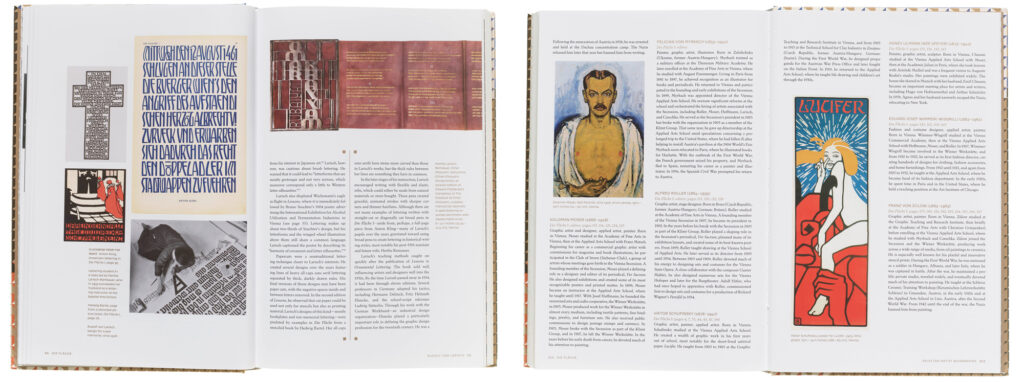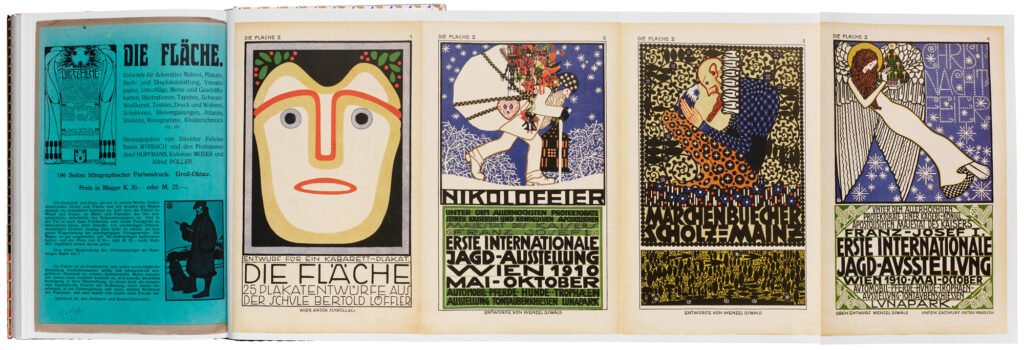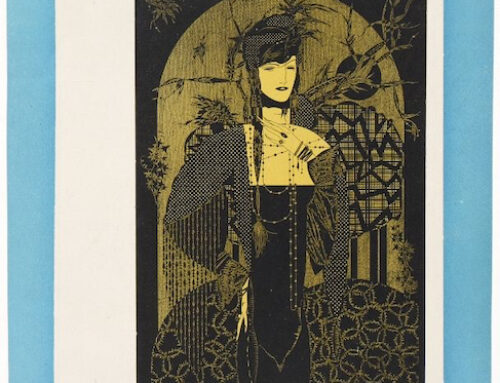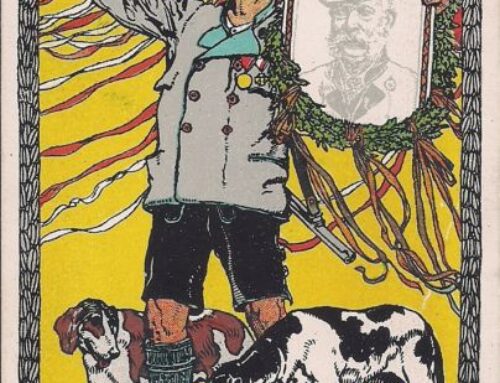The Vienna Secession’s contribution to graphic design has surprisingly garnered little attention within the canon of the graphic arts. While countless books on Art Nouveau might often include a short summary on the Vienna Secession’s journal Ver Sacrum and their exhibition posters, we have yet to find an English language book devoted exclusively to Viennese Graphic Arts on par with the German edition of Wiener Grafik um 1900 by Michael Pabst, and the Italian La Linea Viennese: Grafica Art Nouveau by Giovanni Fanneli (Both currently out of print). It is for this reason why the new publication Die Fläche (Facsimile Edition): Design and Lettering of the Vienna Secession, 1902–1911 is sure to be one of the most exciting graphic design books of the year.
Die Fläche follows other outstanding publications by the Letterfrom Archive, a non-proft organization devoted to letter arts. The archive holds over 100,000 items related to typography and graphic design collected over the years by its founder Rob Saunders, while also offering online workshops and in-person tours. For this new publication, the archive turned to the design periodical Die Flache (1902-1911), a groundbreaking periodical devoted to surface design and featuring the work of the leading graphic artists of the era. Spread across two volumes the periodical included work by the founding members of the Secession (Gustav Klimt, Alfred Roller, and Koloman Moser) in volume one. Published 4 years later, volume two featured the new generation of artists (Bertold Löffler, Gustav Marish, Urban Janke) who were instrumental in forming the dominant graphic style of the Wiener Werkstätte following the departure of Koloman Moser in 1906. Taking its cue from the Secessionist vision of Gesamkunstwerk (a total work of art), the creators of Die Fläche sought to elevate the graphic arts to the same status as the fine arts by bringing surface design to all facets of modern life.
What is instantly obvious looking at its pages is how varied Vienna’s contribution to surface design were; encompassing elements of art nouveau, primitivism, folk art, stencilling, and geometrization. It is perhaps this multifaceted approach to Viennese graphic arts that has confounded scholars intent on aligning the Vienna Secession with the larger Jugendstil (art nouveau) movement. The facsimile edition of Die Fläche recreates every page of this rare periodical at its original size, while even preserving the accordion foldouts of the second edition. Given that copies of the original periodical are exceptionally rare, this facsimile version is an opportunity to see the complete volumes gathered together.
In addition to the beautiful visuals, the book includes essays on Secessionist designers, creative letterers, and women artists who shaped Die Fläche. Dan Reynolds, an American designer and typography professor living and in Germany, offers the first comprehensive English-language study of Rudolf von Larisch, the twentieth century’s most influential theorist of “artistic writing” and the catalyst behind innovative Secession lettering. Megan Brandow-Faller, author of The Female Secession, presents an overview of Die Fläche’s female designers, challenging the misconception that female artists were largely on the sidelines during this period.
The book opens with a fascinating essay by art historian Diane V. Silverthorne on the cultural transformations and artistic ventures that informed the making of Die Fläche. A self-proclaimed devotee of Vienna 1900, she has written extensively on Fin de Siécle topics ranging from the Vienna Secession, Alfred Roller, Ver Sacrum, and most recently the work of sculptor Anna Mahler (Gustav and Alma Mahler’s daughter). In addition to her interest in art and design, she has a passion for music and reviews for The Wagner Journal. She has lectured for many years at the University of London and for public audiences, recently speaking at the Freud Museum London, and presenting on “Exhibiting Music” for the music and philosophy study group. Diane’s anthology, Music, Art and Performance from Liszt to Riot Grrrl (Bloomsbury), was published in 2018.
I sat down with Diane to discuss her interest in Vienna 1900 and her contribution to the book. You can hear the interview below:
Die Fläche is available for purchase from the Letterform Archive Bookstore and select retailers.

